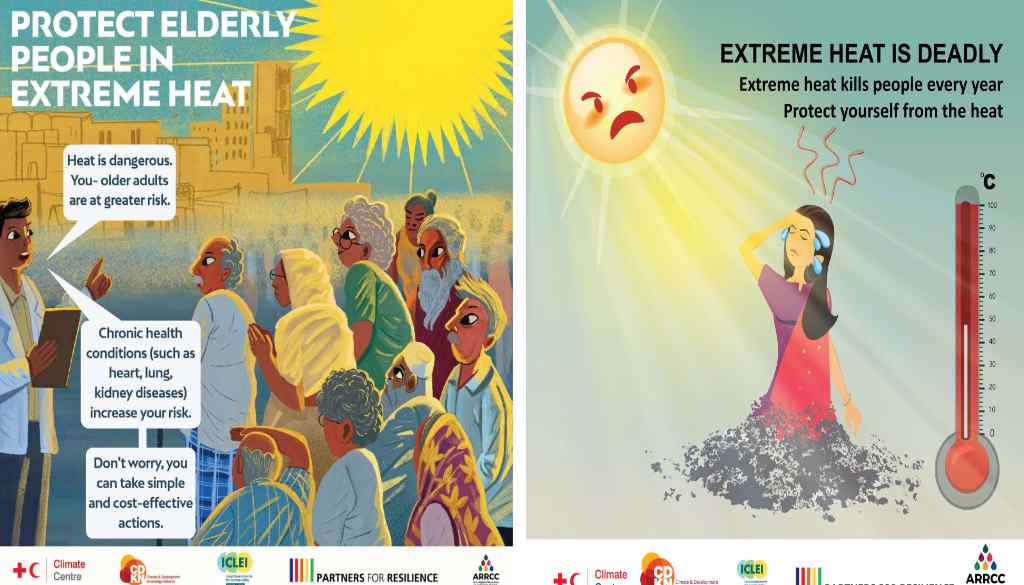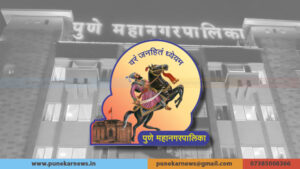Heat Communication Guide: An Essential Tool to Support South Asian Cities and Local Governments Against Extreme Heat

Pune, 23rd April 2024: As cities across South Asia grapple with rising temperatures and the increasing frequency of heatwaves, the need for effective measures to safeguard communities becomes more urgent.
The World Meteorological Organisation (WMO) last month declared 2023 as the hottest year ever recorded globally, setting a new temperature record. The WMO also issued a ‘Red Alert,’ warning of even more severe conditions expected in 2024. Moreover, the European Union’s Copernicus announced on April 9 that March 2024 marked the tenth consecutive month to set a new record as the Earth’s hottest.
Many South Asian cities face severe heatwave conditions exacerbated by climate change, leading to higher temperatures and more frequent heat events. The cities in India experience temperatures that often surpass the critical 40°C mark, especially over the past week, Kolkata experienced extremely high temperatures, with the mercury crossing the 40 degree Celsius mark on multiple occasions. The maximum temperature reached as high as 42 degree Celsius, indicating severe heat wave conditions. In such cases, a communication guide becomes essential for effective dissemination of heatwave alerts and safety measures. Such a guide would help city governments to inform residents about impending heatwaves, advise on precautions, and integrate strategies for cooling solutions.
With very few tools available that provide detailed guidance on combating extreme heat in urban environments, a Heat Communication Guide offers essential strategies for South Asian cities to enhance community preparedness and resilience.
The ‘Heat Communication Guide for the Cities in South Asia’, developed by ICLEI South Asia in collaboration with the Red Cross Red Crescent Climate Centre, with support from the Climate and Development Knowledge Network (CDKN) programme, and the Norwegian Red Cross, serves as a tool to support city governments and municipal officials tasked with devising and executing strategies to mitigate extreme heat effects, offering insights into crafting effective public communication plans focusing on access, relevance, comprehension, and action.
This guide takes a dual approach that supports city authorities in implementing comprehensive strategies to mitigate heat impacts while simultaneously empowering individuals and communities to take informed local actions. It aims to enhance communication efficiency, ensuring that all citizens are well-prepared and can protect themselves during heatwave conditions.
Emani Kumar, Executive Director, ICLEI South Asia, highlighted the significance of this initiative, stating, “Effective communication is vital in our ongoing battle against heat waves. This guide provides a strategic framework tailored specifically for our cities’ needs, enhancing our ability to inform and mobilise communities promptly and effectively.”
The guide also integrates a framework for implementing Heat Action Plans (HAPs) that use data and insights from various stakeholders to not just inform but also inspire community-wide protective measures. “The aim is not just to distribute information but to ensure it leads to action. This guide is crafted to make communication as accessible, relevant, and comprehensible as possible, empowering every individual to take necessary actions during a heatwave,” said Bedoshruti Sadhukhan, Associate Director, ICLEI South Asia.
For the city government, effective action against heat waves involves a proactive communication strategy and infrastructural preparedness. “The primary step is to inform citizens promptly about heat wave alerts, advising them on precautions such as avoiding outdoor work between 11 am and 3 pm, staying hydrated, and utilising oral rehydration solutions or natural coconut water to prevent heatstroke,” said Sadhukhan.
Next is to protect children from the risks of heat exposure, the government could consider closing schools or encouraging remote learning when heatwaves are forecasted. Another critical measure includes setting up cooling shelters and water points in public areas such as markets and parks to offer respite from the heat. “However, these initiatives require prior investment and planning by the city government to ensure that infrastructure and resources are in place ahead of the heatwave season,” said Sadhukhan.
The guide is designed to streamline the flow of critical heat-related information, starting with data collection by meteorological services, health agencies, and utility companies. This data is then synthesised into clear, impactful messages by city authorities and further disseminated through local media and NGOs to ensure it reaches all segments of the population.
Studies have indicated the drastic effects of climate change on the likelihood and severity of heatwaves in South Asian countries — Bangladesh, India, and Nepal — among others. The mid-April heatwave, made at least 30 times more likely due to climate change, brought unprecedented temperatures that disrupted daily life through school closures, infrastructure damage, and health crises. In Bangladesh and India, extreme heat events that historically occurred once in a century are now expected to happen about once every five years, indicating a significant shift in climate patterns. This alarming trend highlights the compounding issue of climate change in South Asia, exacerbating the frequency and intensity of heatwaves.
The guide has been prepared based on activities undertaken by ICLEI South Asia across Rajshahi in Bangladesh, Nepalgunj in Nepal, Surat and Rajkot, India, with the idea to help other cities take up similar actions. This effort marks a significant step towards enhancing urban resilience against heat waves in South Asia, ensuring cities are better equipped and informed to safeguard their populations against this climate threat.





